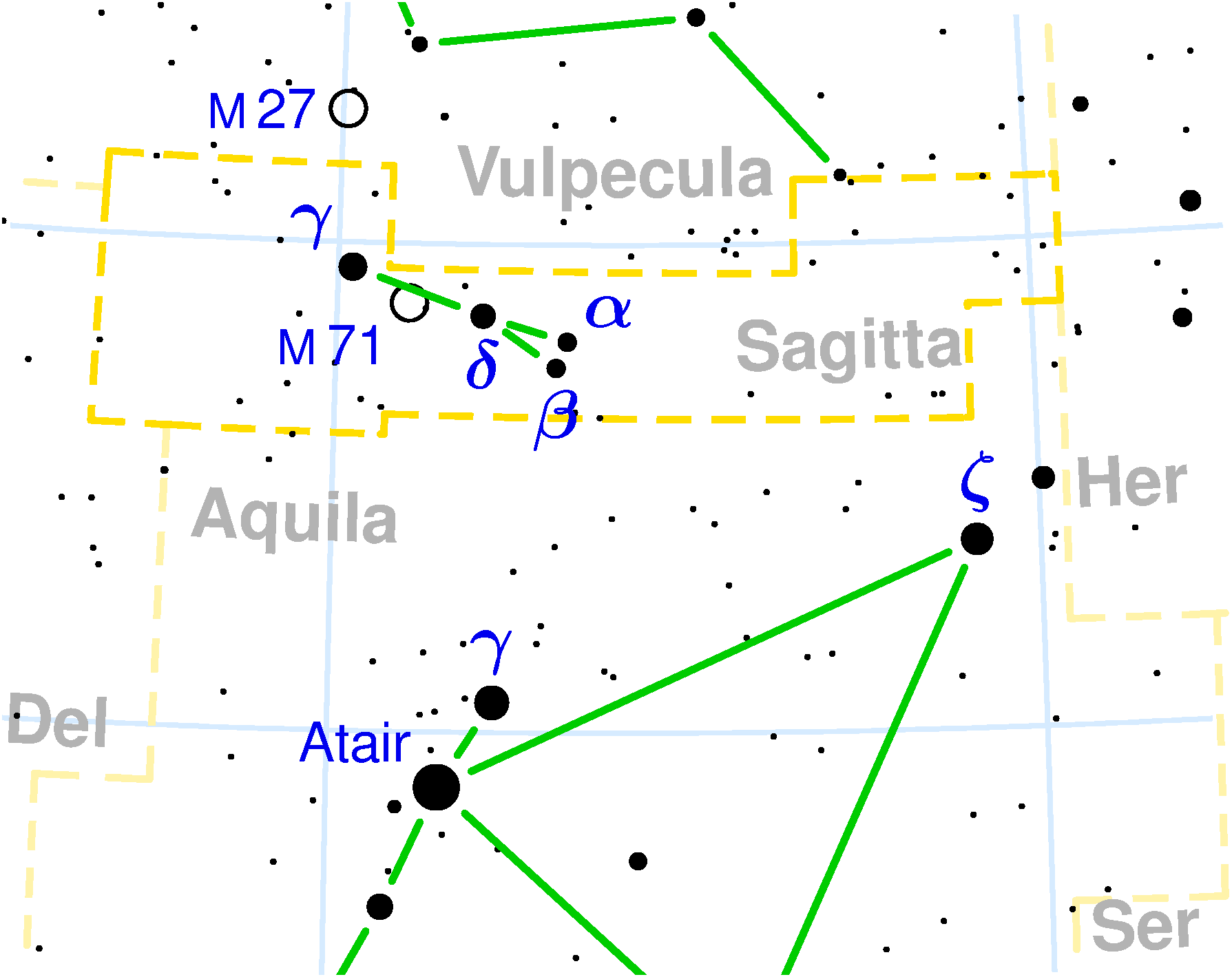Welcome back to Messier Monday! Today, we continue in our tribute to our dear friend, Tammy Plotner, by looking at the unusual globular cluster known as Messier 71.
If you look up into the night sky, on a particularly clear night when there’s not a lot of bright lights nearby, you may be able to make out a series of faint objects. Similar to the Milky Way, that cloudy, ghostly band that reaches across the night sky, these small pockets of fuzzy light are in fact collections of stars located thousands of light years away.
Beginning in the 19th centenary, astronomers began to notice these objects when they were searching from comets. Over time, they came to realize that what they were looking at were in fact star clusters that were several light years across, but which appeared very close together from Earth.
In time, many of these would come to be cataloged and referred to collectively as Messier Objects – after French astronomer Charles Messier who compiled a catalog of over 100 of them in 1771. Since that time, others have been added, and observations made that have refined our knowledge of what they are an what constitutes them.
This is certainly the case when it comes Messier Object 71, a cluster of stars that orbits the core of our galaxy as a satellite. Discovered in 1746 by Swiss astronomer Philippe Loys de Chéseaux, this astronomical object has a long of history of confounding astronomers and being dodgy when it comes to classification.
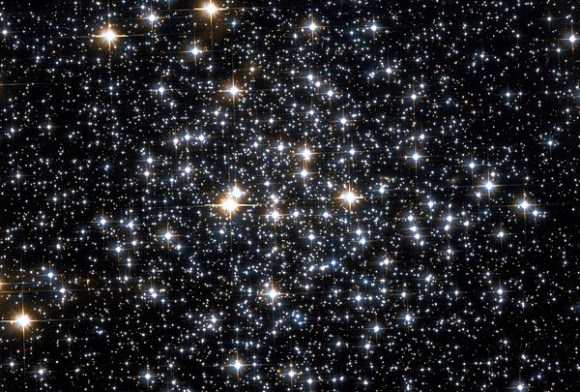
Description:
Messier 71 (aka. M71, NGC 6838) is a loose but beautiful globular cluster in the small constellation of Sagitta. It is a Class X-XI Globular Cluster, which means that its surface luminosity is homogenous, with no increase in stellar density visible at the core. M71 is at a distance of about 12,000 light years away from Earth and measures some 27 light years in diameter.
Messier 71 is unusual because it is difficult to classify – blurring the lines between a condensed star cluster or globular. It began as a dense galactic cluster, thanks to the work of American astronomer Harlow Shapely (1885 – 1972). In 1943, James Cuffey ventured that M71 was probably a loose globular cluster and began to conduct a series of studies to confirm this.
However, the results of his research, which were expressed in a 1943 paper entitled “NGC 5053 and NGC 6838“, were unfortunately inconclusive:
“In NGC 6838 the giant stars are red and become bluer with decreasing brightness. In this respect, as well as in structure and richness of faint stars, NGC 6838 bears a striking resemblance to some of the globular clusters. The tendency of the color magnitude diagrams in the very rich galactic clusters to resemble the diagrams observed in the globular clusters emphasizes again the poorly defined boundaries between the two classes of objects.”
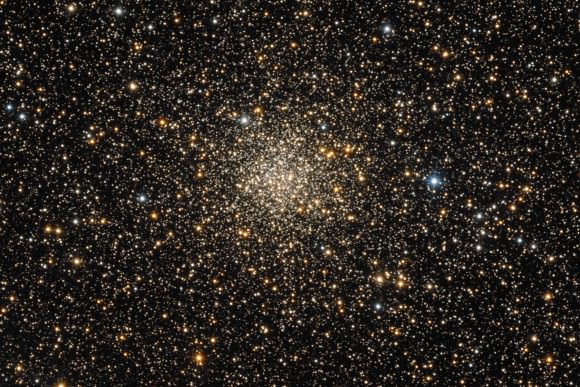
In short, not many clues were around to help astronomers understand exactly what M71 is. Not until 2008, at any rate, when Brazilian astronomer Alan Alves-Brito and his colleagues published a study entitled, “Abundance variations in the globular cluster M71 (NGC 6838)“. In it, they measured the indices of cyanide, hydrocarbons, Calcium, Magnesium and Aluminum from the spectra of 89 different stars, as well as their radial velocities, colors, luminosity, effective temperatures, and gravities.
From all this, they determined the presence of a short “horizontal branch” – a stage in the evolution of stars that immediately follows the red giant phase of a Sun-like star, which is characteristic of a globular cluster. They also determined that the relatively young age of the cluster (9-10 billion years) explained the abundance of metals and the lack of certain types of variable stars.
Hence why today. M71 is classified as a very loosely concentrated globular cluster, much like M68 in the Hydra constellation
So what other secrets does this cluster hold within its 27 light-year diameter? For one, it contains some millisecond pulsars! “We observe the nearby, low-density globular cluster M71 (NGC 6838) with the Chandra X-Ray Observatory to study its faint X-ray populations. Five X-ray sources are found inside the cluster core radius, including the known eclipsing binary millisecond pulsar (MSP) PSR J1953+1846A.” said Ronald F. Elsner (et al).
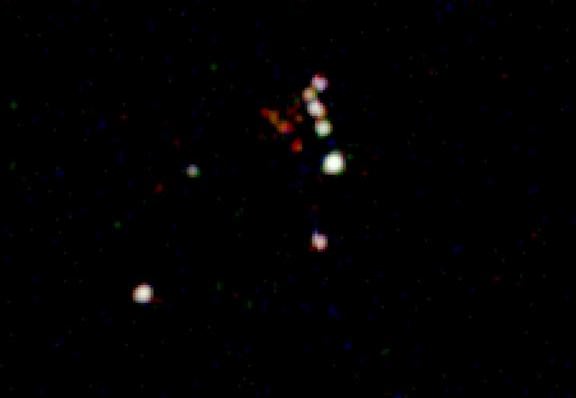
“The X-ray light curve of the source coincident with this MSP shows marginal evidence for periodicity at the binary period of 4.2 hr. Its hard X-ray spectrum and luminosity resemble those of other eclipsing binary MSPs in 47 Tuc, suggesting a similar shock origin of the X-ray emission. A further 24 X-ray sources are found within the half-mass radius, reaching to a limiting luminosity of 1.5 × 10^30 ergs s/1 (0.3-8 keV). From a radial distribution analysis, we find that 18 ± 6 of these 29 sources are associated with M71, somewhat more than predicted, and that 11 ± 6 are background sources, both Galactic and extragalactic. M71 appears to have more X-ray sources in the range LX = 10^30–10^31 ergs s/1 than expected by extrapolating from other studied clusters using either mass or collision frequency. We explore the spectra and variability of these sources and describe the results of ground-based optical counterpart searches.”
Optically speaking, there’s a lot to be found inside M71, too. Just ask the Hubble Team: “Clusters such as NGC6638 are known to have significant and difficult-to-model differential reddening. We have deliberately included a significant number of metal rich clusters, a sample that has been somewhat problematic in ground based surveys (due to differential reddening and/or field star contamination),” says Ata Sarajedini (et al).
“This will allow us to use positional information about stars measured on multiple dithered exposures to improve the precision and depth of the photometry. The calibration to the standard Cousins VI system will be performed via comparisons with ground-based observations, most of which are already in hand. The ground-based data will also provide many more stars to populate the brighter portions of the clusters.”
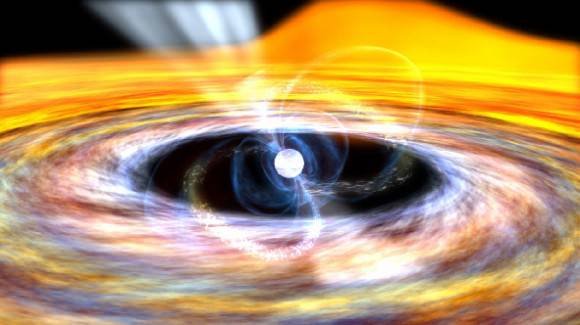
Still need more? Then check this out. “We report the discovery of an SX Phoenicis type pulsating component in the Algol-type semidetached eclipsing binary QU Sge, in the metal-rich globular cluster M71. QU Sge is only about 80″ from the center of M71 and is located in the blue straggler region in the color-magnitude diagram of M71. It is considered to be a probable member of M71, with a membership probability greater than 60% deduced from a proper-motion study in the literature.” says Jeon Young-Beom (et al).
“From time-series CCD photometry, we find that QU Sge has an orbital period of 3.790818 days and a primary minimum depth of 1.333 mag. The eclipsing light curve solution shows that QU Sge has a semidetached binary configuration with the secondary component fully filling its Roche lobe. After subtracting the eclipses from the light curve, we discover an SX Phoenicis type pulsation feature. It is found to have a short period of about 0.03 days and a small amplitude of about 0.024 mag. This is the first eclipsing binary system in a globular cluster to exhibit a pulsating feature. This result supports the model in which the origin of some blue stragglers in globular clusters is mass transfer between two components in the primordial binary systems.”
Would you like to know what else they’ve found out about Messier 71? How about the fact that it sometimes kicks out its white dwarf stars? According to the work of Jeremy Heyl:
“The wind of an asymptotic giant branch star is sufficiently strong that if it is slightly asymmetric, it can propel the star outside the open cluster of its birth or significantly alter its trajectory through a globular cluster. Therefore, if these stellar winds are asymmetric, one would expect a deficit of white dwarfs of all ages in open clusters and for young white dwarfs to be less radially concentrated than either their progenitors or older white dwarfs in globular clusters. This latter effect has recently been observed. Hence detailed studies of the radial distribution of young white dwarfs in globular clusters could provide a unique probe of mass loss on the asymptotic giant branch and during the formation of planetary nebulae both as a function of metallicity and for a limited range of stellar mass.”
History of Observation:
The discovery of this most unusual gathering of stars is credited to Philippe Loys de Cheseaux. Upon observing it in 1746, he said, “Two others of which I didn’t yet determine the positions, one above the northern feet of Gemini, and the other above and very near to Sagitta.”
Johann Gottfried Koehler, a German astronomer, also described it as “A very pale nebula in the Arrow [Sagitta] at 1deg 50′ [Aqr] [301d 50′] and 39d northern latitude.” His observations were not dated, and are hence believed to have occurred sometime between 1772 and 1779.
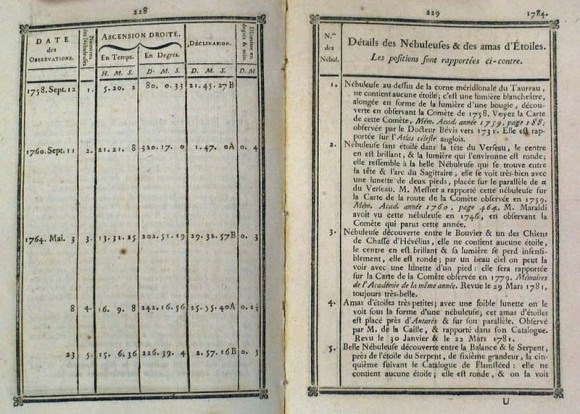
Credit is also due to Pierre Mechain, a French astronomer who was a major contributor to the early study of deep sky objects and comets. On June 28th, 1780, he made observations of the cluster, which were dutifully and correctly logged by Charles Messier later on October 4th, 1780. As he recorded in his catalog:
“71. 19h 43m 57s (295d 59′ 06″) +18d 13′ 00″ – Mechain: (296d 00′ 04″) +18d 14′ 21″ – Nebula discovered by M. Mechain on June 28, 1780, between the stars Gamma and Delta Sagittae. On October 4 following, M. Messier looked for it: its light is very faint and it contains no star; the least light makes it disappear. It is situated about 4 degrees below [south of] that which M. Messier discovered in Vulpecula. See No. 27. He reported it on the Chart of the Comet of 1779.”
It was first brought into proper resolution by Sir William Herschel in 1783, observed by his sister Caroline and cataloged by his son John. However, it was best described by Admiral Smyth in his A Cycle of Celestial Objects: for the use of naval, military, and private astronomers (1844), where he stated:
“A rich compressed Milky-Way cluster on the shaft of the arrow, and 10deg north-a quarter-east from Altair. It was discovered by Mechain in 1781, and described by Messier as a nebula unaccompanied by stars, and of a very feeble light. Piazzi seems to have observed it meridionally as a star of the 8th magnitude, by admitting the light of a lamp upon it, but his darkened field ought to have shown that it is flanked with four telescopic stars, besides other larger companions in view.”
Finding Messier 71:
This mass of stars is fairly easy to locate, provided you can find the arrow shape of Sagitta in the night sky. Then, using a star chart (like the one below), look for the 6th magnitude star about halfway between Gamma and Delta Sagittae.
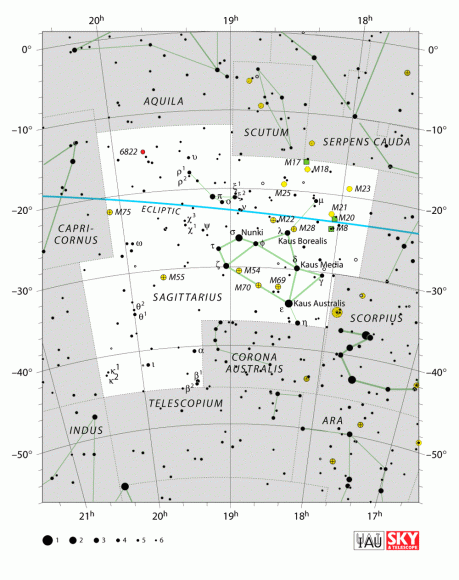
Through an average pair of binoculars, it will appear as a fairly large, fuzzy patch that almost seems to come to resolution. Using a small telescope, individual stars will begin to become discernible. Larger telescopes can and will fully resolve this unusual globular cluster. M71 makes a fine target for urban skies and does well under even partially moonlit conditions.
Packed within these 27 light-years are enough mysteries and astronomical phenomena to keep an amateur astronomer busy for years! And considering that it’s relatively easy to spot, and with minimal equipment, it is a popular stargazing indeed!
Enjoy your own observations of this highly unusual “star cluster”!
And here are the quick facts to help you get started:
Object Name: Messier 71
Alternative Designations: M71
Object Type: Class X-XI Globular Cluster
Constellation: Sagittarius
Right Ascension: 19:53.5 (h:m)
Declination: +18°46.5 (deg:m)
Distance: 13 (kly)
Visual Brightness: 6.1 (mag)
Apparent Dimension: 7.2 (arc min)
We have written many interesting articles about Messier Objects and globular clusters here at Universe Today. Here’s Tammy Plotner’s Introduction to the Messier Objects, M1 – The Crab Nebula, Observing Spotlight – Whatever Happened to Messier 71?, and David Dickison’s articles on the 2013 and 2014 Messier Marathons.
Be to sure to check out our complete Messier Catalog. And for more information, check out the SEDS Messier Database.
Sources:

